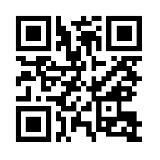How to identify the quality of solid floor sample board
 Sep 24, 2020|
Sep 24, 2020| View:784
View:7841. Whether the wood floor sample board is heavy and hard: the stability of heavy and hard floors is generally better than that of light and soft floor, and the latter is easy to expand. For example, ironwood, heavy ant wood, round bean, acacia wood, and lattice wood are heavier and harder than Fraxinus and fibrous bark Yurui, and the floor is not easy to deform. However, Yurui and Fraxinus often have gaps or local arch after 1-2 years. Therefore, we can choose the floor according to the air-dry density of the floor on the manufacturer's information. The floor with air-dry density above 0.8 is heavy, hard, and stable.
2. Whether the floor sample board contains oil: the heavier the material is, the better it is. If the wood is too heavy and hard, it is easy to have fine cracks on the surface of the board (not between the boards). The floor with an air-dry density above 1.0 should be careful. However, the wood is more stable if it contains oil (unpainted boards, sawn surfaces feel oily). Ironwood is easy to appear fine cracks because it does not contain oil. In addition to the first floor, try not to lay it. But the heavy and wood, the disc bean because of the oil stability are good.
3. Whether the natural color of the floor sample board is neutral and light: the stability of heavy ant wood and sappan is good, but the natural color is deep and the color difference is large, so there are two problems: first, there is a big gap between the actual floor and the sample; second, the color is single, which is dark. And the oak and another light color can be processed into many colors, the color difference is also small. It's OK to have round beans and greenwood.









